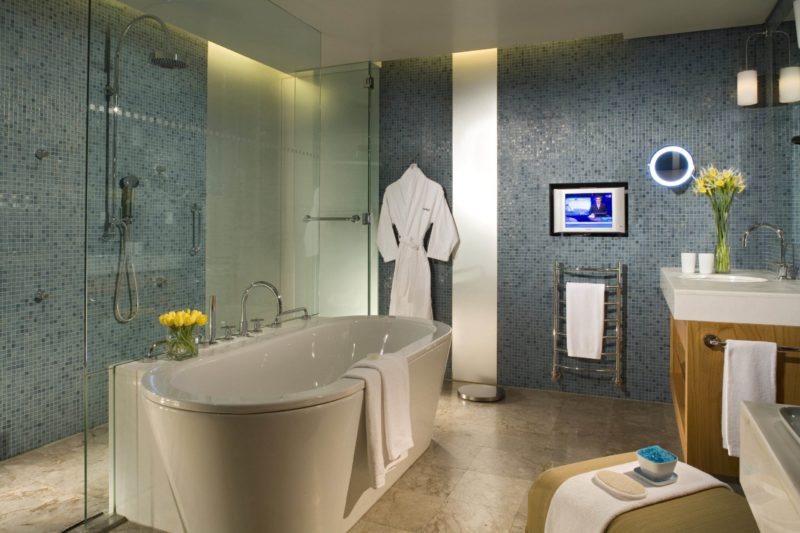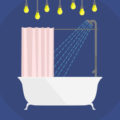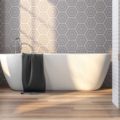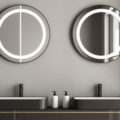Like any room throughout the home, lighting your bathroom poses its own set of unique problems and challenges. What type of light fitting should I use, and how many? Where should I put them?
The most important element to consider though, is often the one that gets overlooked – safety. Mixing electrical components with water is never a good idea and nowhere does this happen with greater frequency than a wet and humid bathroom environment. So, how do you install lights in a room that often gets wet so that you don’t end up blowing your hand off every time you want to get a shower?
An IP (Ingress Protection) rating is assigned to any product where its ability to prevent objects of varying sizes and compositions from breaking its barriers is relevant. Any such rating normally consists of the letters ‘IP’ followed by two numbers, the first of which applies to solid objects and the second to water and fluids. The two tables below outline what each number means and allows you to gauge how enclosures with a certain rating would perform under a specific set of conditions…
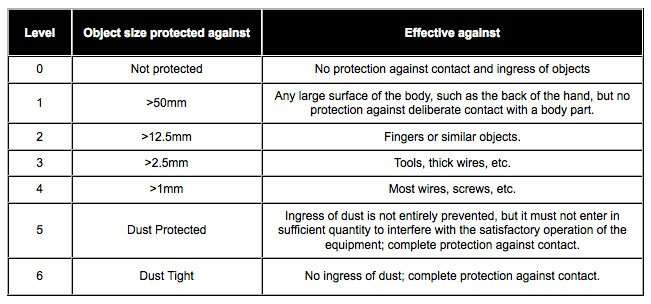
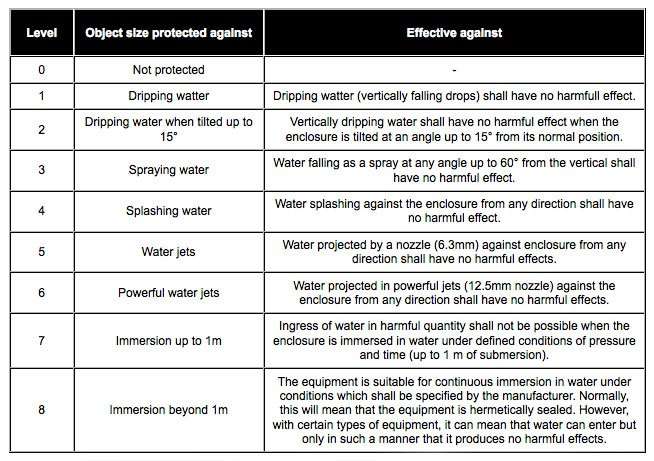
So what does all this mean in terms of lighting your bathroom safely? The 17th edition of the IET’s (Institute of Engineering and Technology) Wiring Regulations includes an amendment that designates certain IP Zones for bathroom-based light fixtures and at what proximity from a water source these fixtures should be placed. The diagram below illustrates the relevant dimensions and proximities…
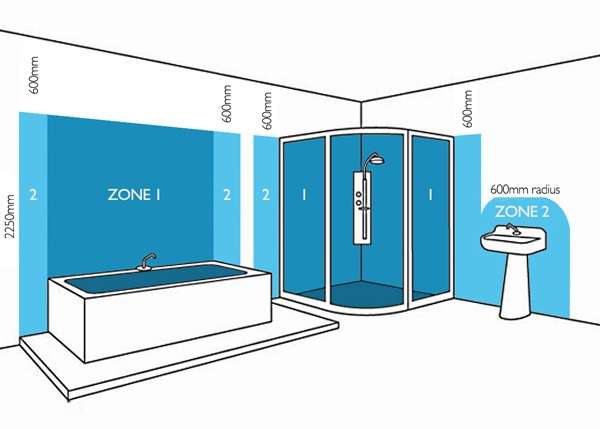
Zone 0 is the area either directly in the bath tub or shower basin. Ultimately, these are areas where any fitting would actually be submerged and therefore require an IP rating of at least IPX7. The 7 in this instance denotes the fitting’s ability to prevent the “ingress of water in harmful quantity […] when the enclosure is immersed in water under defined conditions of pressure and time (up to 1m of submersion)”.
It is worth noting that in the context of IP Zones there is no requirement for the enclosure to resist solid objects; if water can’t breach its barriers then its resistance to solid objects is naturally spoken for and as such doesn’t need to be defined.
Zone 1 is the area either inside the shower cubicle or that directly above the bath tub (to a height of 2.25 metres). These are areas that will typically be subjected to multidirectional splashes and so would require a rating of at least IPX4, though if they are likely to be cleaned with focused washer jets then a rating of IPX5 is advised.
Zone 2 is the area that sits on either side of Zone 1, sitting at a distance of 0.6 metres away from the bath and/or shower and at a height of 2.25 metres if directly above. These areas require an IP rating of IPX4 though again, if pressurised water jets are to be used to clean this area then a rating of IPX5 is preferable.
Anything outside these areas does not require a fitting with a specific IP rating, though it is advised that any enclosure used inside a bathroom should have a rating at least comparable to those above, as the presence of steam in generally humid environments can at the very least cause light fittings to fail, even when the actual risk of danger is negated.
See our full range of bathroom-ready, IP65 rated downlights.
